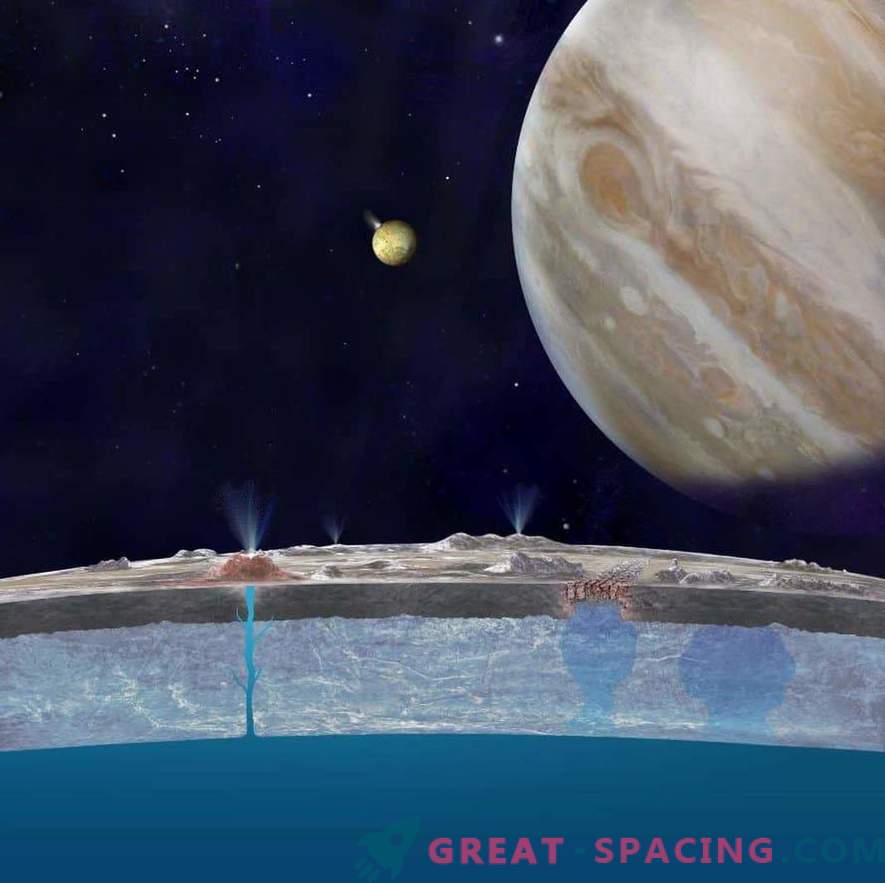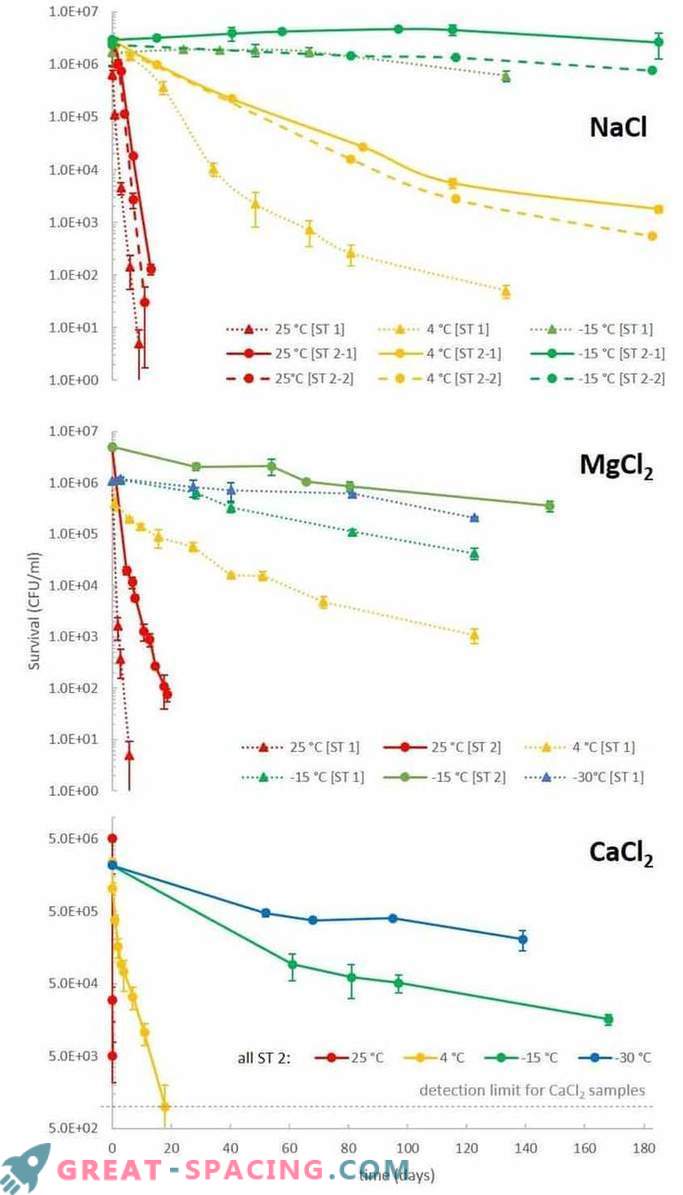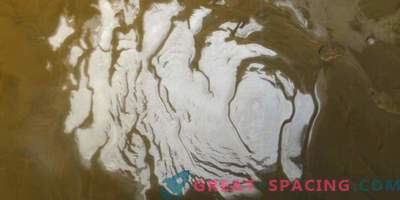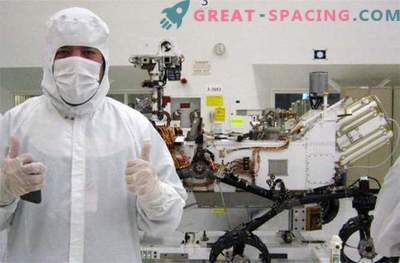
Jets spewing salt water and ice from Saturn's moon Enceladus. Could life exist in this mixture of water, salt and temperature
A new study indicates that bacteria can survive in the salty chemicals found on Mars, Enceladus, Europe, Pluto, and possibly other places.
The detection of jets and subsurface oceans on Jupiter’s satellite in Europe, Mars organic materials and probable hydrothermal vents in the oceans of Saturn’s moon Enceladus bring humanity closer to finding someone else’s life. Such forms must withstand extreme conditions and previous studies have indicated that there may be different types of bacteria.
Liquid bodies on some bodies distant from the Sun have lower freezing points due to chemicals and salts representing antifreeze. Therefore, microbial life there must withstand both temperature and constituent elements. To broaden microbial viability, researchers conducted tests with Planococcus halocryophilus, bacteria found in the permafrost of the Arctic.
Bacteria were subjected to tests in sodium, magnesium and calcium chloride, as well as perchlorate solution. The latter is a chemical compound that can help Mars maintain water in a liquid state throughout the summer.
Toxic to life
Perchlorates are toxic substances in high concentrations, so scientists wanted to determine how much and in what concentrations they are able to prevent the survivability of bacteria. The survival rate for bacteria in perchlorate was much lower than in other solutions. But in temperatures down to -30 ° C the situation improved.
The lowest freezing point depression (the solute can lower the freezing point of the solution) for perchlorate reaches 50% of the mass of the entire solution. This is incredibly high compared to lowering the freezing point of other chlorides.

It is believed that the subsurface ocean of Europe is rich in salt. At the moments when salt water reaches the surface, it is exposed to high-energy particles trapped in Jupiter's radiation belts, transforming white to yellowish-brown salts
That is, Mars can not support life? Scientists say the likelihood is. The presence of perchlorate does not exclude life, since bacteria can grow in a 10% solution. The surface Martian soil contains less than 1% perchlorate, but the salt concentration in the solutions differs from the concentration in the soil.
Adapted for survival
Perchlorate liquid solutions can be diluted to increase the ability of bacteria to survive. But the balance between concentration and temperature must be maintained. Places like Desert Attacks (Chile) and areas of Antarctica are endowed with relatively high levels of perchlorate. And microbes find ways to circumvent these conditions. As a rule, lower temperatures increase the survivability of microorganisms, but temperature is not the main factor for all. The type of microbe and the composition of the chemical solution also affect vitality. The analysis showed that bacteria in a solution of sodium chloride (NaCl) died for 14 days at room temperature. At 4 ° C, survival increased, and when the mark reached -15 ° C, almost all bacteria survived. NaCl is endowed with a higher freezing point (-21 ° C) than other salts. Bacteria in solutions of magnesium and calcium chloride had a higher survival rate at -30 ° C.

The survival rates of bacteria in various types of salt: sodium chloride (NaCl), magnesium chloride (MgCl2) and calcium chloride (CaCl2). The cooler the temperature, the longer the survival period is
Scientists have exposed bacteria to multiple freeze / thaw cycles from 25 ° C to -50 ° C. Mars is able to undergo some sharp temperature changes on the surface (diurnal and seasonal). The average Martian temperature reaches about -60 ° C, and at the poles drops to -125 ° C. Therefore, bacteria have to adapt to extreme fluctuations.
Saline solutions improve survival rates. When bacteria are stressed, they are endowed with shock reactions. They create specific proteins that help regulate, survive and cope with a harmful environment. The addition of 10% sodium chloride reduced the level of microbial death from 20% to 7%.
Survival vs. Growth
The study reveals the possibilities of extraterrestrial microbes, but here the difference between survival and prosperity is emphasized. The ability to exist in certain conditions does not mean that they grow there. Now scientists are trying to determine how different salt concentrations at different temperatures affect the spread of bacteria.
Such studies help to focus on the search for life or not to exclude the possibility of the survival of microorganisms in toxic perchlorate. Other variables also affect the search, such as the ability of bacteria to resist radiation or extreme atmospheric pressure. Perhaps there are factors that we still have to learn.











































